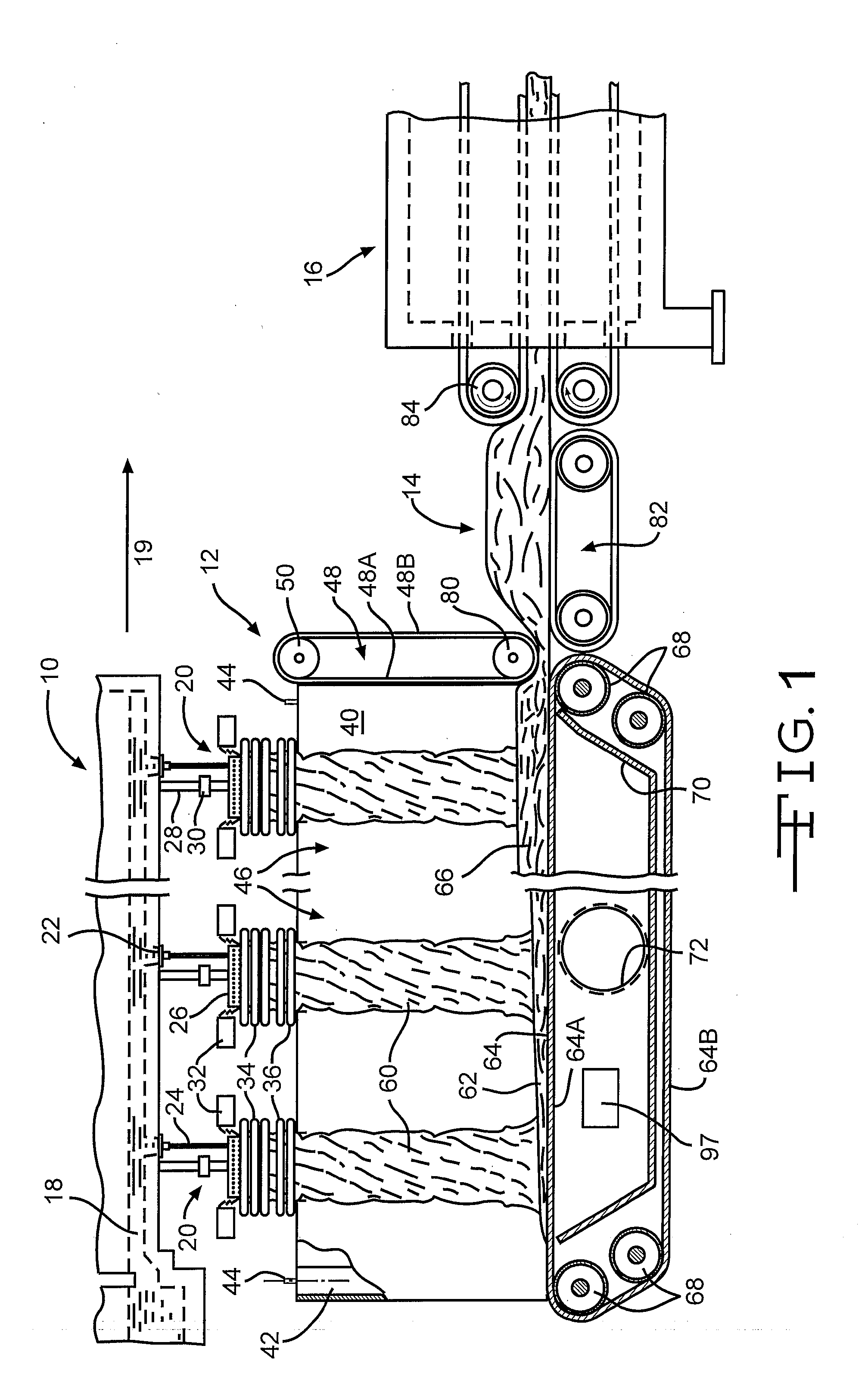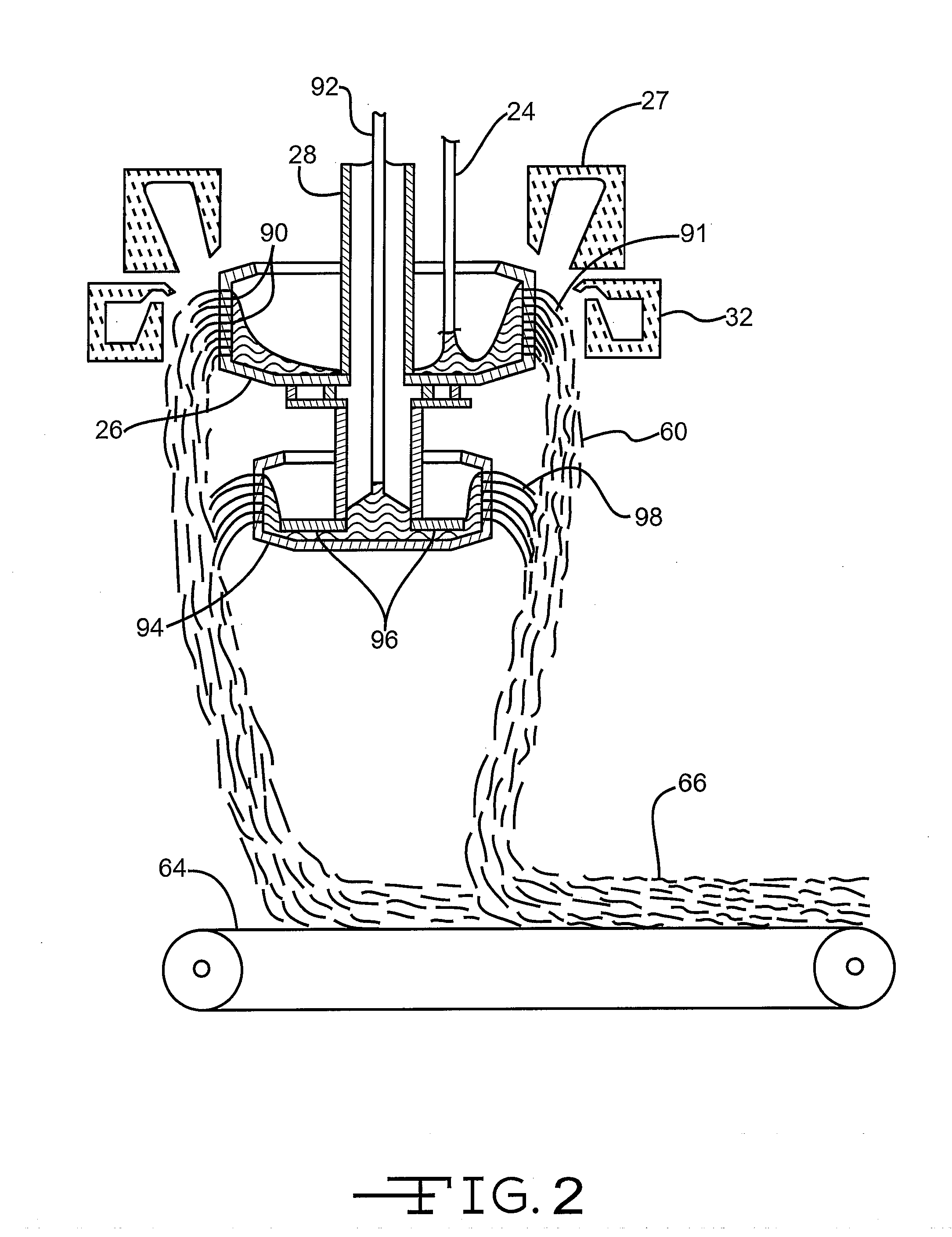High thermal resistivity insulation material with opacifier uniformly distributed thoughout
a technology of thermal resistivity and insulation material, which is applied in the direction of manufacturing tools, instruments, weaving, etc., can solve the problems of reducing the overall heat transfer, opacifying thermoplastic fibers with bulk fibers, and not being able to achieve the effect of improving thermal resistivity
- Summary
- Abstract
- Description
- Claims
- Application Information
AI Technical Summary
Benefits of technology
Problems solved by technology
Method used
Image
Examples
example 1
Aqueous Opacifying Agent Dispersions
[0066]An aqueous sizing composition is prepared having a polyvinylacrylic film forming resin such as DUROCET or COVINAX, and an alkoxysilane coupling agent such as A174 and A1100. Suitable wetting agents or surfactants may be added as well. To this size composition is added Aquadag® E colloidal graphite to a final concentration of about 4% by weight. This size is applied to glass fibers spun from a rotary fiberizer by spraying the veil below the spinner.
example 2
Thermoset Binder Fibers
[0067]Thermoset binder having a dry weight composition of 76.2% maltodextrin, 19% citric acid and 4.8% sodium hypophosphite, was prepared in varying concentration sample dispersions, including one with a solids content of 70%. Thermoset fibers were prepared from this 70% sample dispersion in the lab at room temperature using a 6 inch diameter plastic rotary spinner spun at 1200 rpm and having a single orifice having a diameter of 0.041 inches. Samples of the spun fiber were examined by scanning electron microscopy (SEM) and by transmitted light optical microscopy at 400× magnification with a digital filar eyepiece. The distribution of fiber diameters (100 pts) was determined to be as set forth in Table 1, below.
TABLE 1Thermoset fiber diametersDiameter% in each(μm)size category1 to 3153 to 5255 to 7217 to 911 9 to 11911 to 13613 to 155>158Total100
example 3
Fibrous Products
[0068]The opacifying size composition of Example 1 is sprayed onto glass fibers spun down to form small sample handsheets of unbonded glass fibers. Thermoset fibers as prepared in Example 2 are then blown down onto the sample handsheet using a low-pressure annular blower located next to the spinner. The handsheet bearing the thermoset binder fibers is removed and a second unbonded handsheet is placed on top, with the thermoset binder fibers between the two unbonded handsheets. This sandwich is placed in a lab oven and cures to bond the two handsheets of opacified fibers together into a fibrous product.
PUM
| Property | Measurement | Unit |
|---|---|---|
| wavelengths | aaaaa | aaaaa |
| wavelengths | aaaaa | aaaaa |
| wavelengths | aaaaa | aaaaa |
Abstract
Description
Claims
Application Information
 Login to View More
Login to View More - R&D
- Intellectual Property
- Life Sciences
- Materials
- Tech Scout
- Unparalleled Data Quality
- Higher Quality Content
- 60% Fewer Hallucinations
Browse by: Latest US Patents, China's latest patents, Technical Efficacy Thesaurus, Application Domain, Technology Topic, Popular Technical Reports.
© 2025 PatSnap. All rights reserved.Legal|Privacy policy|Modern Slavery Act Transparency Statement|Sitemap|About US| Contact US: help@patsnap.com



